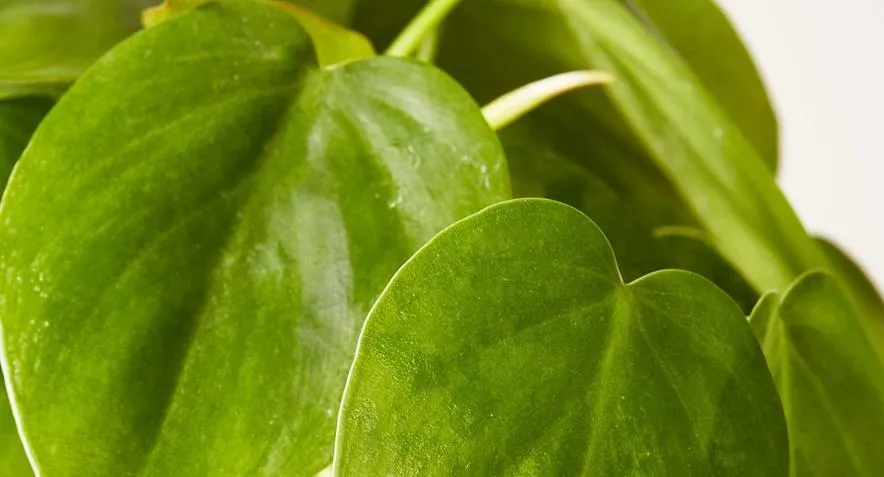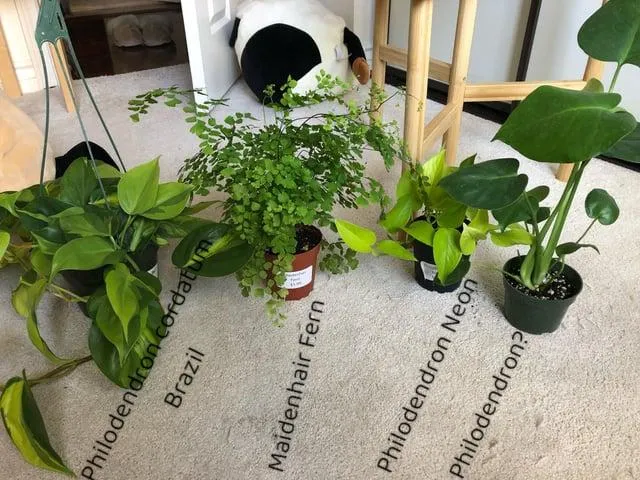Everything You Need to Know About Using Wicks with Philodendron Plants
Philodendrons are popular houseplants known for their lush foliage and low maintenance needs. While they thrive in soil, many plant parents choose to grow their philodendrons hydroponically using a wick system. In this article, I’ll answer all your questions about setting up and caring for a philodendron wick.
What is a Philodendron Wick?
A philodendron wick involves placing the roots of the plant in a reservoir of water or nutrient solution, while the stem and leaves remain above in a planting medium. Capillary action draws water and nutrients from the reservoir up into the soil-less potting mix through a braided cotton or jute wick.
- The wick acts like a straw, pulling moisture from the reservoir to hydrate the roots.
- This wick system allows the plant to absorb just the right amount of water on demand without the risk of overwatering.
- It’s a novel way to grow philodendrons hydroponically without having to manually water as frequently.
Setting Up a Philodendron Wick
Setting up a philodendron wick is quite simple. Here are the basic steps:
- Select a pot that is at least 2-4 inches wider than the plant’s root ball. Terra cotta, ceramic or plastic work well.
- Drill or make drainage holes in the bottom of the pot.
- Line the pot with mesh or landscape fabric to prevent soil from leaking out.
- Place river rocks, gravel or clay pebbles in the bottom for the wick to rest on.
- Cut the wick to hang about an inch below the pot bottom.
- Fill the pot 3/4 full with a well-draining potting mix.
- Gently tucked the philodendron roots into the soil-filled pot.
- Secure the other end of the wick in the water reservoir.
Reservoir Options for a Philodendron Wick
You have a few choices for the water reservoir beneath the philodendron wick pot:

- A saucer large enough to hold water without overflowing.
- A plastic storage container, bucket or recycling bin.
- Self-watering pots with built-in reservoirs also work well.
- For multiple plants, consider setting up rectangular reservoir bins or trypon boards.
No matter the reservoir style, ensure the wick remains fully submerged in water to function properly. Top up water levels as needed.
Caring for Philodendron Wicks
Once set up, philodendron wicks are basically carefree. Just follow these tips:
- Check the water reservoir daily at first to ensure the wick remains soaked. Top up water as needed.
- Mist the plant leaves to increase humidity if growing indoors.
- Fertilize monthly in the growing season with a diluted liquid houseplant food.
- Repot only when roots overgrow the pot, using a well-draining soilless mix.
- Prune or trim faded leaves and air layer new plants from stem cuttings.
- Move the setup to partial shade if leaves yellow or burn in strong light.
Potential Problems with Philodendron Wicks
While a wick system is pretty foolproof, a few issues can arise. Here are some solutions:
- If the wick dries out somehow, the plant will wilt until it’s rehydrated. Saturate the wick to revive the philodendron.
- Mold or mildew can grow on the wet wick. Replace it with a clean wick soaked in a hydrogen peroxide solution.
- In rare cases, rot may set in if the soil stays saturated for too long. Improve drainage and let the soil dry slightly between waterings.
- gnats are attracted to the moisture. Use sticky traps or sand top-dressing to control the pesky flies.
My Experience Growing Philodendron Wicks
From my experience, wick systems are a breeze for philodendron care. I’ve used them for everything from common pothos to rare aroids. Honestly, it’s saved me from under-watering on busy weeks. The plants always look lush and happy.

One time, I left town and forgot to refill a reservoir before leaving. When I returned, the poor philodendron was literally wilted over from thirst! A good drenching revived it within hours. But yikes, that was an epic fail on my part. Now I always triple check water levels!
Overall, wicks provide a low-effort way to grow philodendrons, spider plants and other moisture-loving tropicals. And the plants seem to prosper with a continual, steady supply of water their roots. It’s a handy system for anyone who struggles with regular watering schedules.
Final Thoughts on Philodendron Wicks
In summary, philodendron wicks offer an innovative hydroponic method to bushier, more vibrant growth. With minimal set-up and routine care, your philodendron will basically see to its own watering needs. Just be sure to keep an eye on reservoir levels until you get the hang of the wick system.
From the variety of pot and reservoir styles available, you’re sure to find a perfect fit for any home or collection. With some trial and error, wicks are a sort of hack for healthier, lower maintenance philodendrons. So give them a try – I have a feeling you and your philodendron will love the results!

Philodendron Wick Care Guide
| Light | Bright indirect light. Keep away from direct sunlight which can burn leaves. |
|---|---|
| Water | Water when top 1-2 inches of soil are dry. Allow soil to dry slightly between waterings. Can become root rot prone if overwatered. |
| Temperature | Keep above 60°F. Can tolerate cooler temperatures (50-60°F) if acclimated. Do not expose to freezing temperatures. |
| Humidity | Prefers humidity levels between 50-60%. May grow best with occasional misting or pebble tray to increase ambient humidity. |
| Soil | Well-draining, airy soil. Use a potting mix specifically for philodendrons/pothos or add extra perlite/orchid bark to regular potting soil for better drainage. |
| Fertilizer | Use diluted liquid houseplant fertilizer monthly during spring and summer. |
FAQ
-
What is a philodendron wick plant?
A philodendron wick plant is when you take cuttings from a philodendron vine and stick the stems directly into water instead of planting them in soil. Basically, the cut stems act as “wicks” that draw water up to keep the plant alive.
-
Why do people use the philodendron wick method?
Growing philodendrons in water using wicks is sort of like hydroponics for houseplants. At the same time, it lets you propagate new philodendron plants without needing soil. Plus, the plants appear to like it – their vines and leaves can grow very long this way!
-
How do you make a philodendron wick plant?
To make a philodendron wick plant, start by cutting stems from your existing philodendron vine that have a few nodes. Kind of trim the leaves back a bit so the plant isn’t using too much energy. Then, place the cut end of the stem directly into a container of water. The bottom 1-2 inches should be submerged. It’s that simple!
-
How long does it take for a philodendron wick plant to root?
It typically takes 2-4 weeks for philodendron wick cuttings to develop roots when placed in water. The roots will appear as little white strands emerging from the nodes under the water’s surface. Patience is key – don’t move the plant until you see definite roots forming. Echoing what the experts say, resist the urge to constantly check too soon.

-
Can you keep a philodendron wick plant indefinitely in water?
While philodendron wick plants may thrive for quite a while suspended in water, they won’t last forever that way. Eventually, the water would get depleted of nutrients and the plant would decline. Perhaps after 6 months to a year, it’s best to transplant the now-rooted cuttings to soil so the philodendron can continue growing strongly for years.
-
What are some potential issues with philodendron wick plants?
A few possible problems with philodendron wicks include bacterial or fungal infections if the water is not changed regularly. Similarly, algae or scummy film buildup in stagnant water could harm the plant. The container also needs to stay topped up, as the wick cuttings will rot if the level drops too low. Pests like fungus gnats may become an issue. But with good care, philodendron wicks can thrive.
-
Do you have any other questions about growing philodendron wicks?
I hope this FAQ helped give you a basic sense of how to grow and care for philodendron wick plants. Let me know if you have any other questions! I’d be happy to discuss my personal experience with them or look up additional information from experts. Tag me on social media too if you want to share photos of your philodendron wick adventures.
